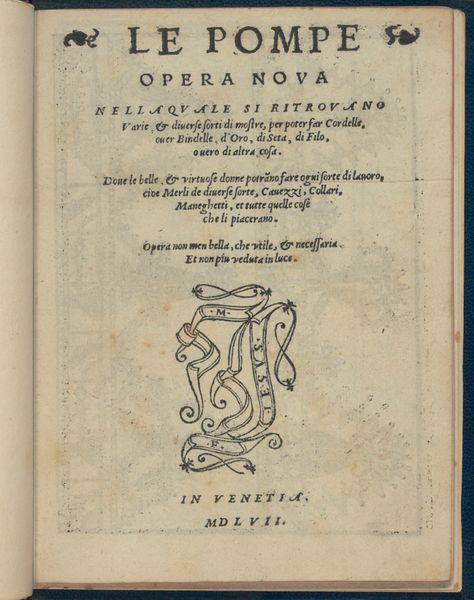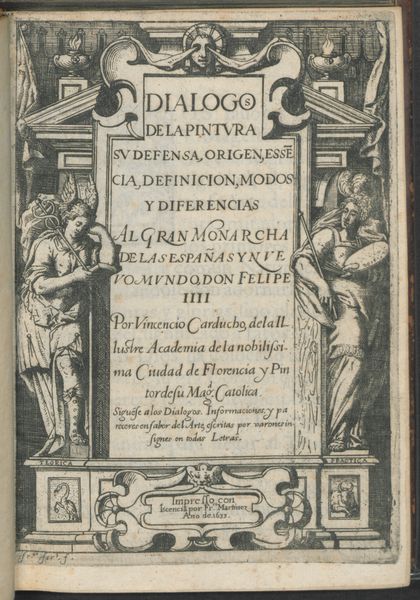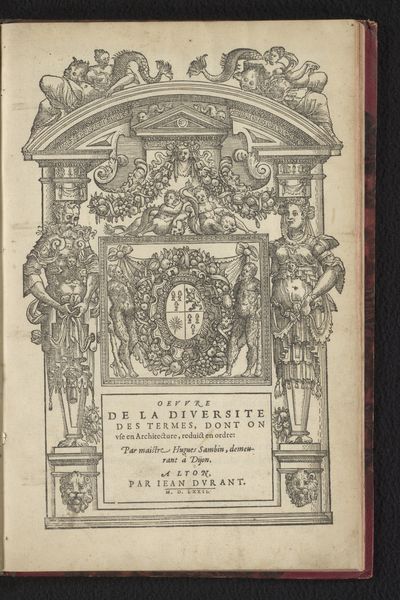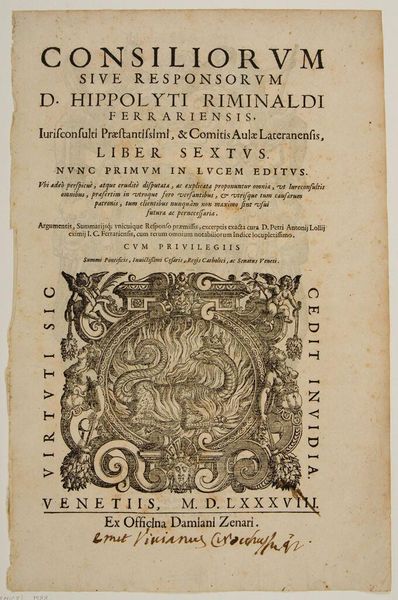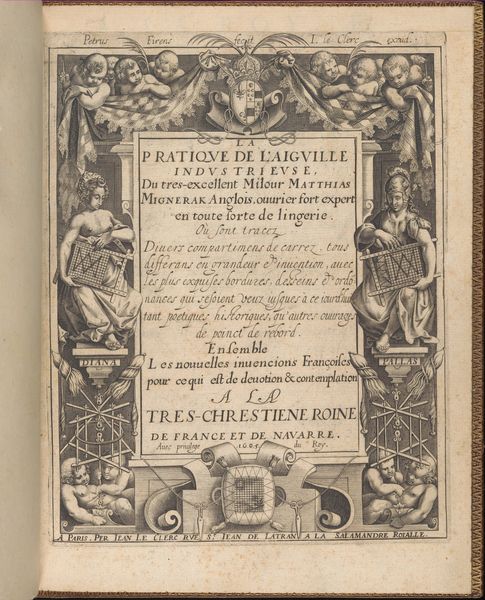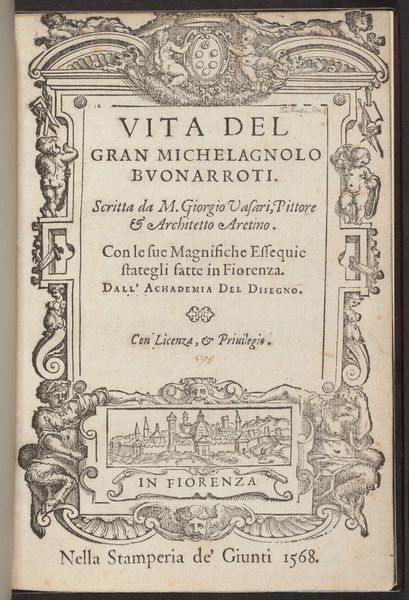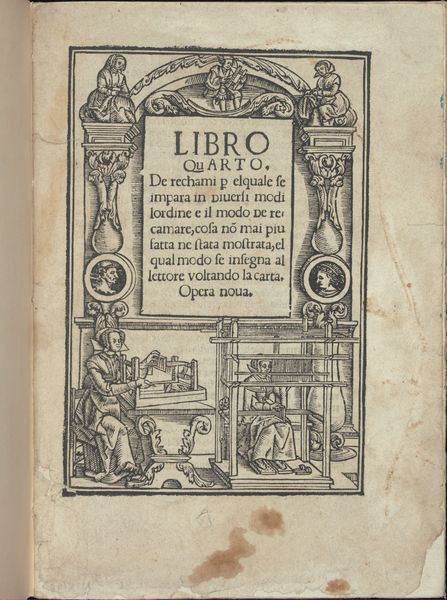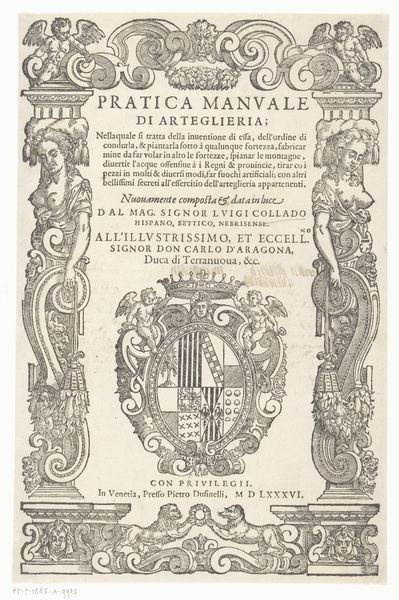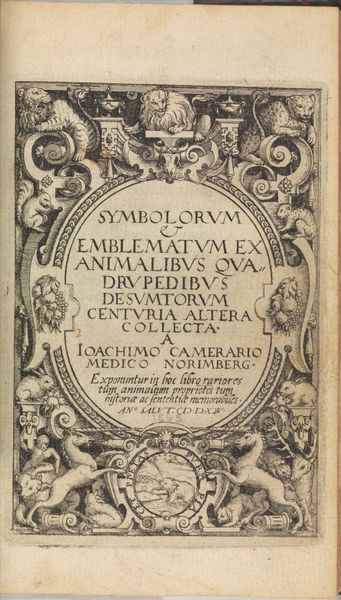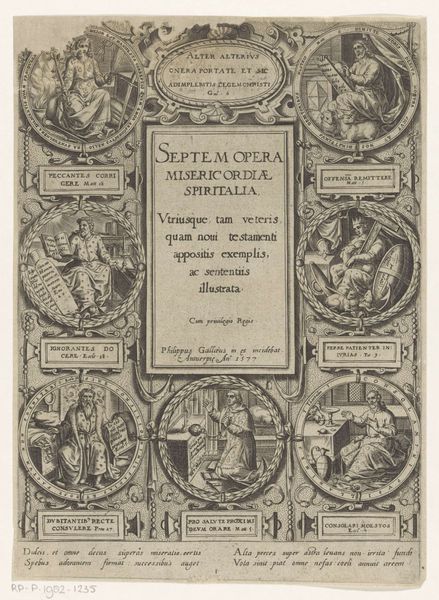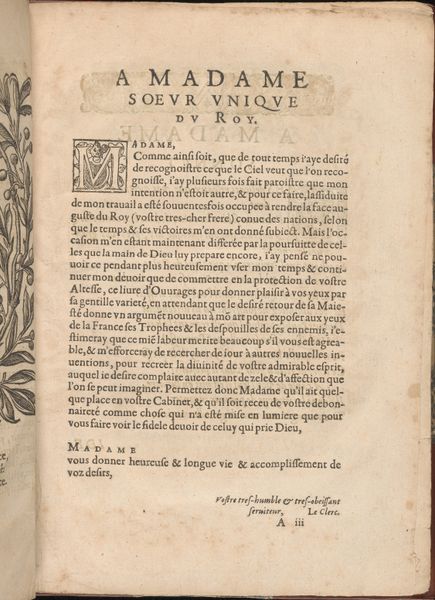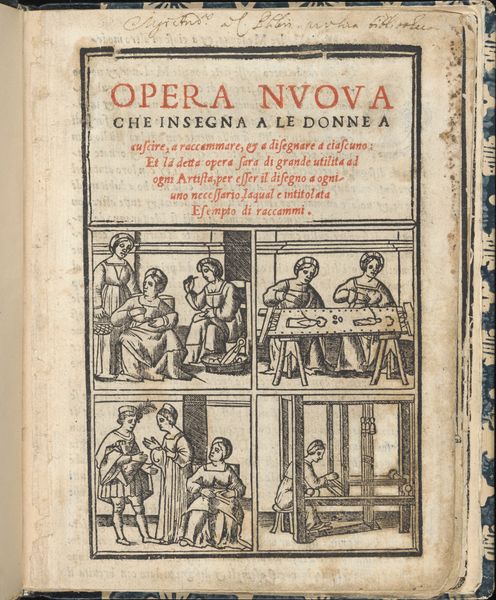
Ornamento delle belle & virtuose donne, title page (recto) 1554
0:00
0:00
drawing, graphic-art, print, engraving
#
portrait
#
drawing
#
graphic-art
#
pen drawing
# print
#
figuration
#
italian-renaissance
#
engraving
#
calligraphy
Dimensions: Overall: 7 1/2 x 5 7/8 in. (19 x 15 cm)
Copyright: Public Domain
Curator: We're looking at the title page from "Ornamento delle belle & virtuose donne," created by Matteo Pagano in 1554. This engraving, which translates to "Ornament for Beautiful and Virtuous Women," resides in the collection of the Metropolitan Museum of Art. Editor: My first impression is one of controlled exuberance. The contrast between the densely decorated border and the structured text creates a vibrant tension. Curator: Indeed. The ornate framework immediately suggests a symbolic threshold. Angels, grotesque masks, and classical figures act as guardians, inviting the viewer into a world promising beauty and virtue. Consider how the composition alludes to a transformative process for those who engage with the book’s contents. Editor: Structurally, I notice the calligraphic title dominates the composition, commanding attention with its central placement. This deliberate typographic hierarchy, surrounded by a border teeming with life, demonstrates a clear intent to merge practical instruction with an appeal to Renaissance aesthetics. Curator: Absolutely. And the visual language draws heavily on classical mythology and Christian iconography. This blending served to legitimize the book's domestic advice within the established symbolic order of the time. Women seeking self-improvement were thus presented as participating in a long and valued tradition. The image in the lower portion depicts an intimate, domestic setting filled with women at work and education, as the virtuous woman was also one of practical action. Editor: Also, I can see the use of the etching in linear style makes a lot of geometric patterns with strong symmetry, while allowing a certain degree of plasticity when creating shapes and giving lights and shadows. Curator: The symmetry reinforces a sense of order, reflecting the desire for a well-regulated domestic sphere, which contrasts nicely with the delicate work on view within. The intended user would have seen herself elevated by association with the goddesses and cherubs above and below. Editor: Seeing this page reminds me how the material presentation was key to shaping its reception. Even a functional guide could become an object of beauty, capable of elevating the reader. Curator: This piece of print allows a portal to glimpse how symbols could inform not just religious experience or political ambition, but also everyday understandings of beauty and propriety in early modern Europe.
Comments
No comments
Be the first to comment and join the conversation on the ultimate creative platform.
